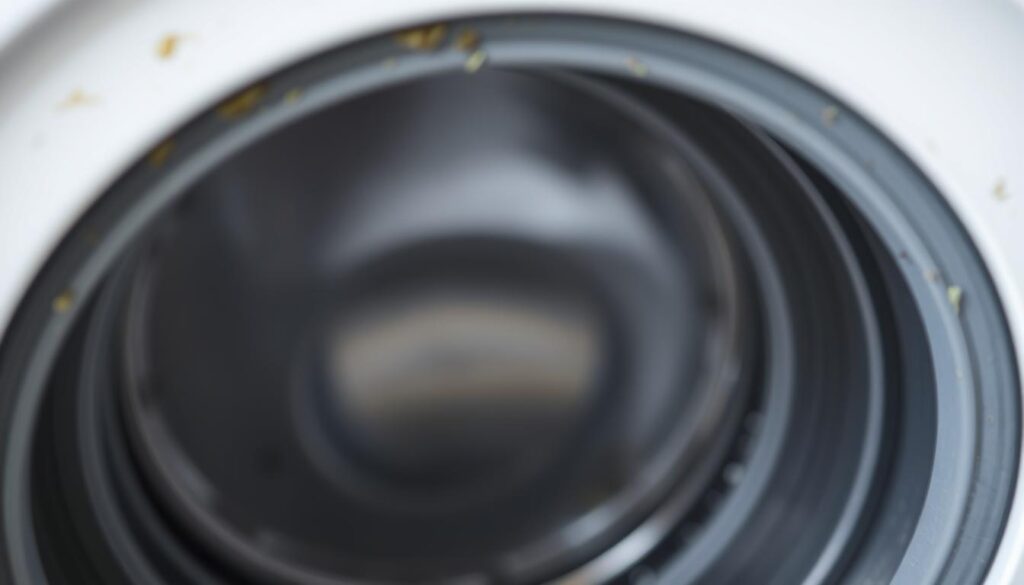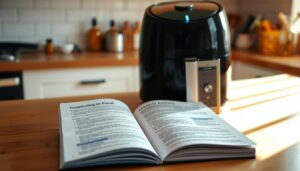Are you tired of dealing with the unsightly and unhygienic issue of mould growth on your washing machine’s rubber seal? This common problem not only affects the appearance of your appliance but also compromises the cleanliness of your laundry.
The constant moisture and warmth inside the washing machine create an ideal environment for mildew to thrive, particularly in the folds of the seal.
Understanding the causes and implementing effective cleaning techniques are crucial for removing mould and preventing its recurrence, thus extending the lifespan of your appliance.
Key Takeaways
- Identify the causes of mould growth on washing machine seals.
- Learn effective techniques for mould removal.
- Understand the importance of regular maintenance.
- Discover methods to prevent mould recurrence.
- Explore both commercial and natural cleaning solutions.
Understanding Washing Machine Mould Problems
Mould on the washing machine seal is not just a cosmetic problem; it can also lead to health issues and decrease the efficiency of your washing machine. The warm, damp environment inside the washing machine creates an ideal breeding ground for mould and mildew.
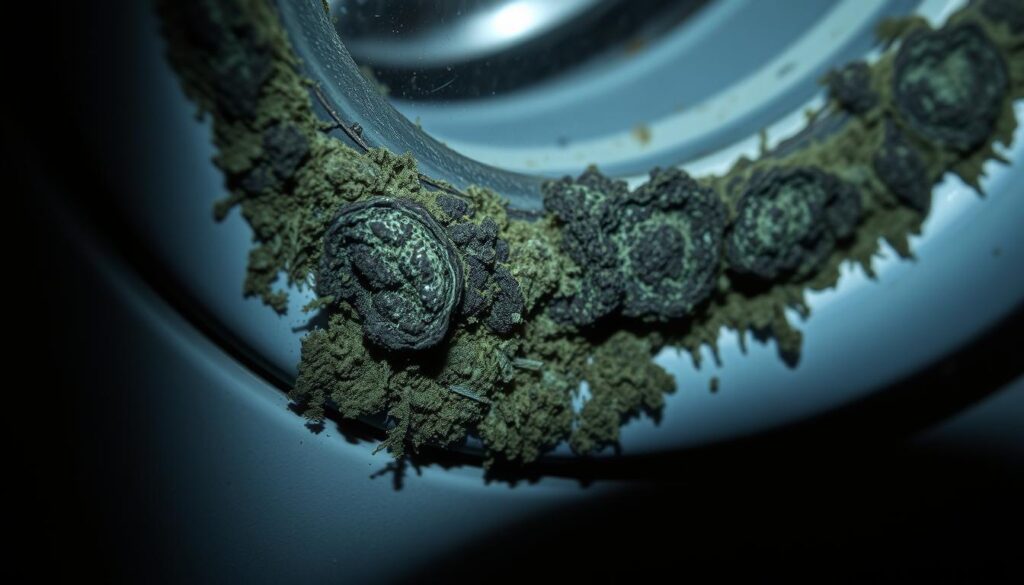
Causes of Mould Growth on Door Seals
The door seal of your washing machine is particularly susceptible to mould growth due to its constant exposure to moisture. Detergent residue, fabric softener, and debris from clothing can accumulate on the seal, fostering an environment conducive to mould and mildew. Regular cleaning is essential to prevent this build-up.
Health and Machine Implications
Mould growth on the washing machine seal can have significant health and machine implications. Some of the key concerns include:
- Mould can trigger allergic reactions and respiratory issues, particularly in individuals with asthma or compromised immune systems.
- Black mould spores can transfer from the seal to your clothing, potentially causing skin irritations and allergic reactions.
- The musty odour produced by mould growth can permeate your laundry, making freshly washed clothes smell unpleasant.
- Prolonged mould growth can deteriorate the rubber seal material, leading to cracks, leaks, and potentially costly repairs or replacement.
Regularly cleaning the washing machine seal is crucial for maintaining both personal health and machine functionality. By understanding the causes and implications of mould growth, you can take proactive steps to prevent it and ensure your washing machine operates efficiently.
Essential Supplies for Washing Machine Door Seal Mould Removal
To effectively clean mould from your washing machine’s door seal, you’ll need some essential supplies. Having the right tools and equipment will make the process safer and more efficient.
Protective Equipment
When cleaning mould, it’s crucial to protect yourself. You’ll need cleaning gloves to prevent skin contact with mould and cleaning agents. Look for gloves that are waterproof and have a good grip to handle wet surfaces and cleaning tools effectively.
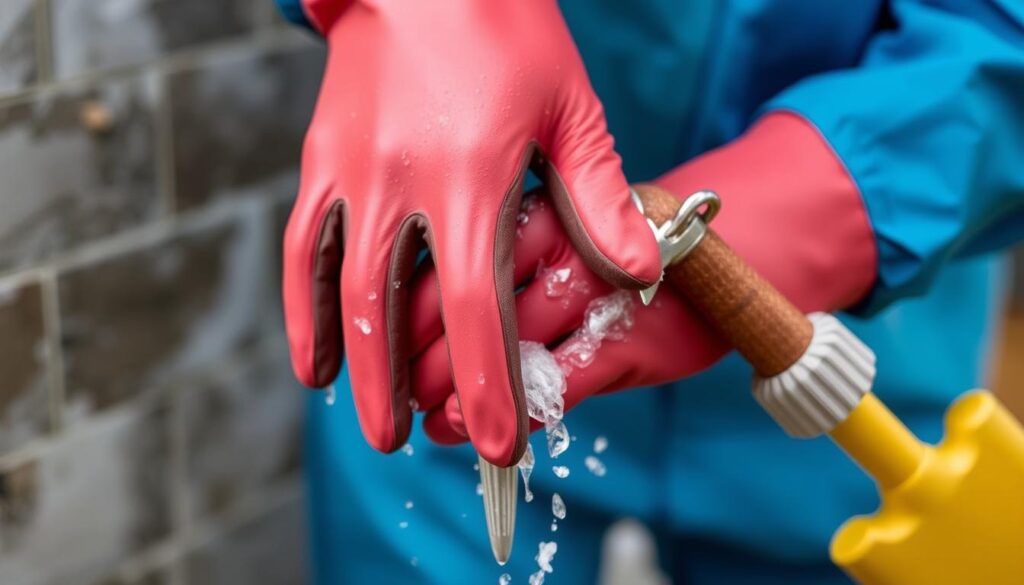
Cleaning Agents and Tools
Various cleaning agents and tools can help remove mould from your washing machine door seal. You can use specialised mould and mildew removers, or opt for natural alternatives like white vinegar or baking soda. Microfibre cloths are ideal for wiping down the seal without causing damage.
- Specialised mould and mildew removers containing active ingredients like sodium hypochlorite.
- White vinegar, a natural alternative that kills mould and bacteria.
- Baking soda, which provides gentle abrasion and neutralises odours.
- Microfibre cloths for effectively trapping mould particles.
- A soft-bristled toothbrush or specialised cleaning brush to reach into the seal’s folds.
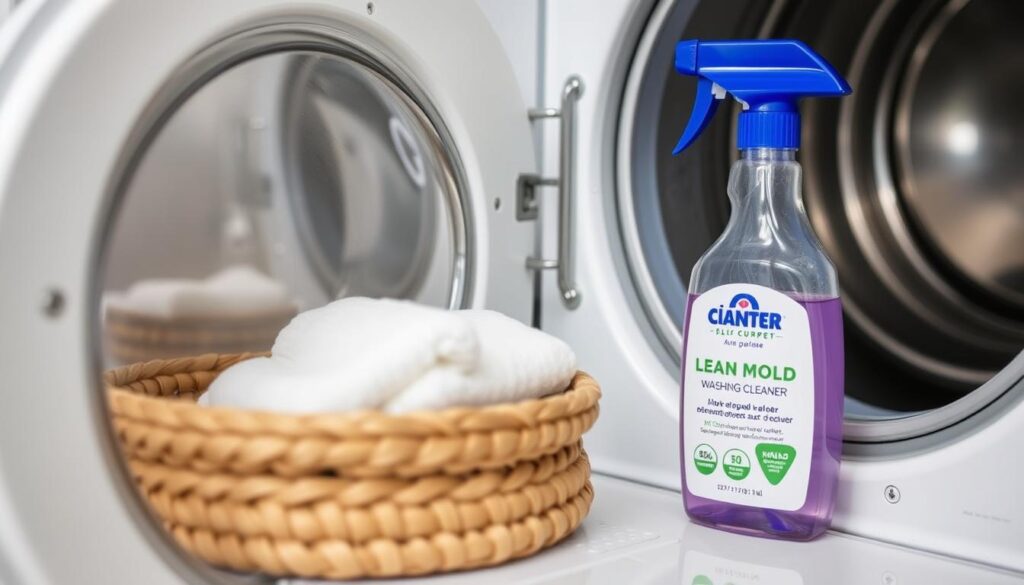
Commercial Cleaning Solutions for Rubber Seals
For a thorough clean, consider using commercial cleaning solutions specifically designed for washing machine rubber seals. These products are formulated to tackle mould and mildew effectively.
Specialised Mildew Removers
Specialised mildew removers are available for tackling mould on washing machine seals. When searching for the best mildew remover for washing machine UK, look for products that are specifically designed to combat mould and mildew.
These removers typically contain ingredients that break down and eliminate mould, leaving your washing machine’s seal clean and fresh.
Washing Machine Cleaners
Dedicated washing machine cleaners, such as Dr. Beckmann’s Washing Machine Cleaner and Affresh, are designed to clean both the visible rubber seal and the internal components of your washing machine.
- Dedicated washing machine cleaners are designed to clean both the visible rubber seal and the internal components of your machine.
- These cleaners typically come in tablet or powder form that you place in the empty drum before running a hot maintenance cycle.
- Washing machine cleaners contain enzymes and surfactants that break down soap scum, detergent residue, and biofilm where mould thrives.
- Regular use of machine cleaners helps prevent mould from establishing itself on the rubber seal and other machine components.
Natural Washing Machine Door Seal Mould Removal Techniques
Natural mould removal methods for washing machine door seals are not only eco-friendly but also highly effective. You can utilise common household items to remove mould and mildew from your washing machine’s rubber seal.
White Vinegar Solution Method
White vinegar is a natural antibacterial agent that can help kill mould and mildew on your washing machine’s door seal. To use this method, mix equal parts water and white vinegar in a spray bottle. Spray the solution onto the affected area and let it sit for 10-15 minutes. Then, scrub the area gently with a soft-bristled brush and rinse with clean water.
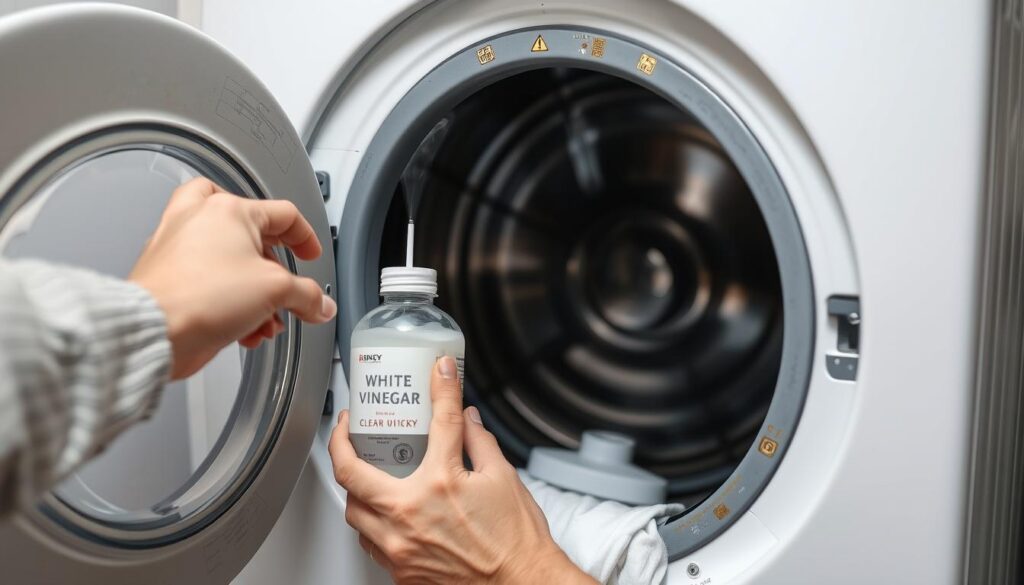
Baking Soda Paste Technique
Baking soda is a natural abrasive that can help remove mould and mildew from your washing machine’s door seal. To use this method, mix equal parts baking soda and water to form a paste. Apply the paste to the affected area and let it sit for 10-15 minutes. Then, scrub the area gently with a soft-bristled brush and rinse with clean water. For enhanced cleaning power, you can spray white vinegar onto the baking soda paste to create a foaming reaction that helps lift mould.

For more information on removing mould from your washing machine’s rubber seal, you can visit Home and Gardens for additional guidance.
Step-by-Step Mould Removal Process
Eliminating mould from your washing machine door seal requires a thorough understanding of the cleaning process. This involves several key steps that you should follow carefully to ensure effective mould removal.
Preparation and Safety
Before you start cleaning, make sure you wear protective gloves and eyewear to avoid exposure to mould spores and cleaning agents. Ensure the area is well-ventilated to prevent inhaling any fumes or spores.
Cleaning the Rubber Seal
To clean the rubber seal, mix a solution of water and a cleaning agent, such as white vinegar or a specialised mildew remover. Apply the solution to the seal and scrub gently with a soft-bristled brush to remove any visible mould. 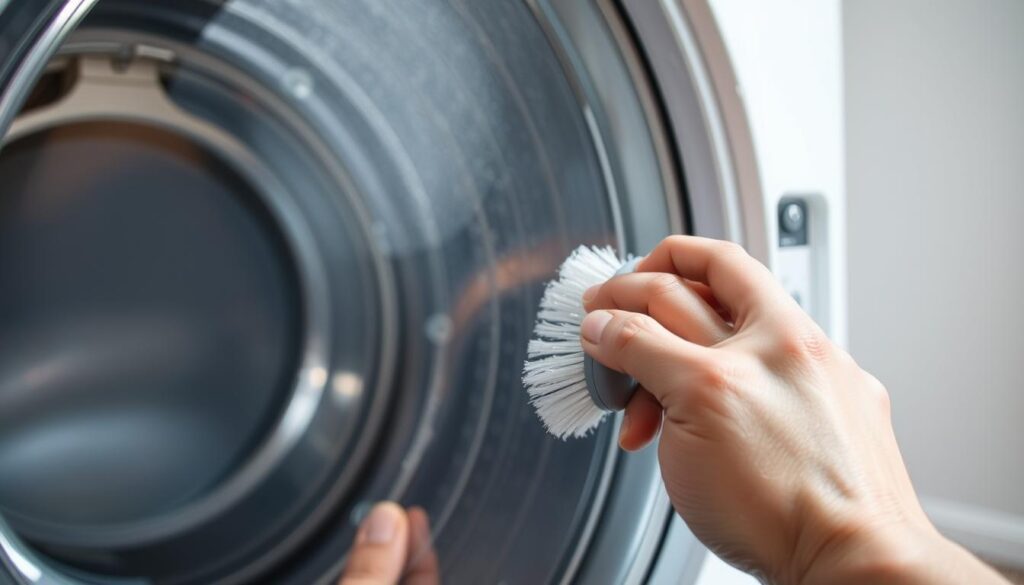
Running a Sanitising Cycle
After manually cleaning the rubber seal, run a sanitising cycle without clothes to clean the internal components of your washing machine. Set the machine to the highest temperature setting (ideally 90°C/194°F) and add 250ml of white vinegar to the detergent drawer. This will help kill any remaining mould spores and clean the drum.
- Run a hot wash cycle without clothes to sanitise the washing machine.
- Add white vinegar to enhance the cleaning power of the hot water.
- Leave the door open after the cycle to allow all components to dry completely.
By following these steps, you can effectively remove mould from your washing machine door seal and prevent future growth.
Preventing Future Mould Growth
Ensuring your washing machine dries properly between uses is key to preventing mould. According to Tamara Nunes, a professional cleaner, simply leaving your washing machine door open after each use allows for air circulation, ensuring the machine dries completely. Additionally, wiping down the rubber seal with a clean, dry cloth or towel after each use removes moisture that contributes to mould growth.
To further prevent mould, consider the following simple maintenance tips: use a microfibre cloth to remove lint and debris from the seal, reduce detergent usage to prevent soap scum build-up, and run a monthly maintenance clean using a washing machine cleaner or white vinegar. Regularly cleaning your washing machine and ensuring it dries between uses will keep it mould-free and your laundry smelling fresh.
